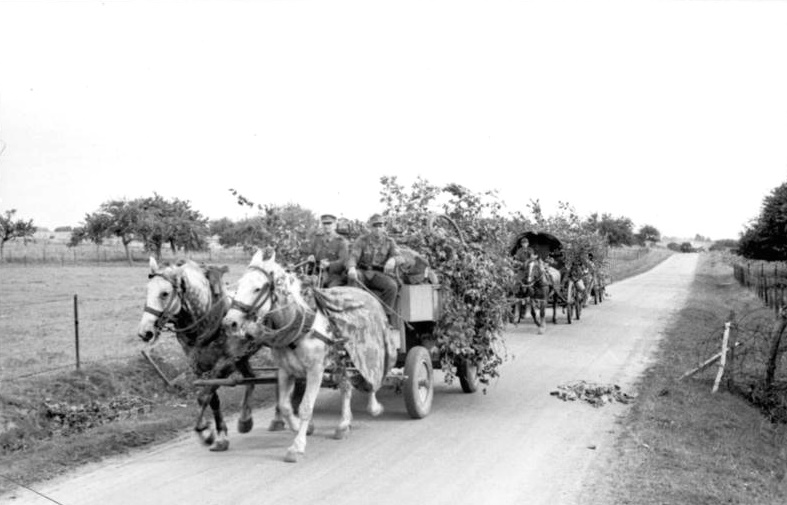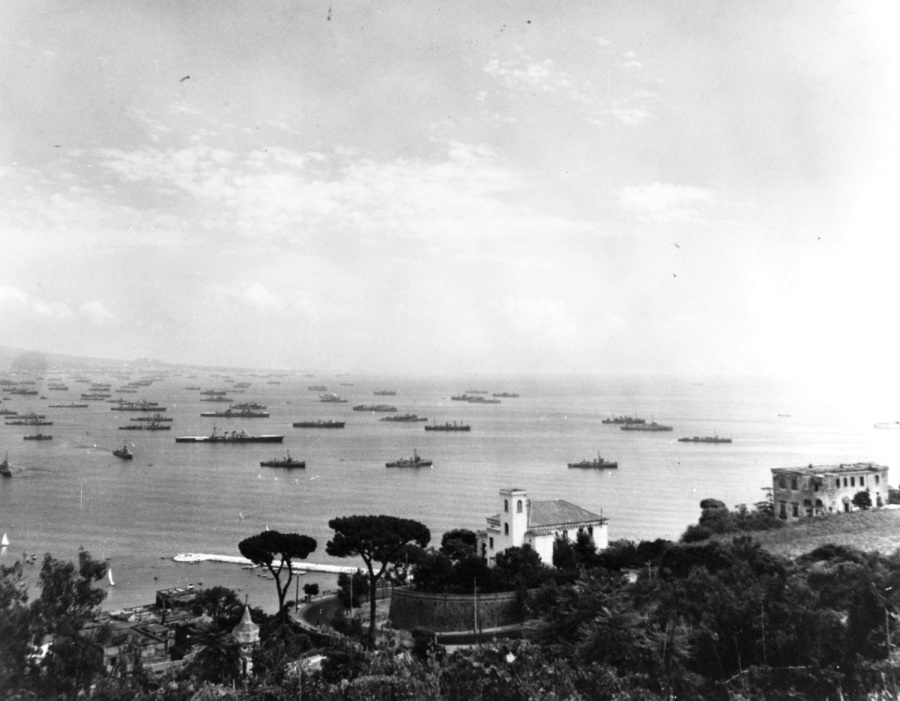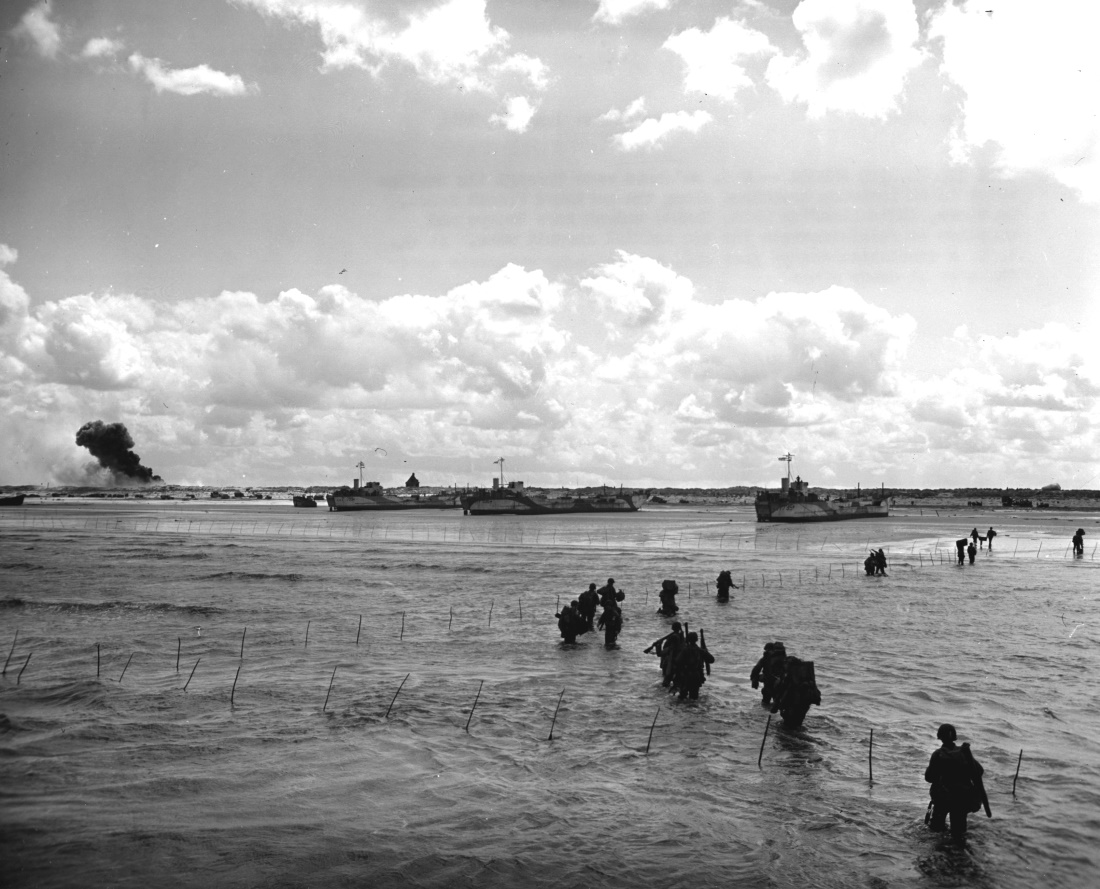Units were able to rehearse assault landings on a division scale, including naval and air support. Efforts were made to simulate the exact conditions for the upcoming invasion. Obstacles were constructed resembling as much as possible those that could be expected on the beaches of southern France. The live firing of ammunition made battle conditions more dramatic and instructive. Detailed planning and executions were handled as if it were D-Day. Although training time was limited for the US 7-A’s invasion of southern France, it was realistic and effective. A key element of the training was the previous experience of the units involved. Their removal from combat and placement back into combat within a very short time was remarkable. On August 8, the US 7-A returned from final rehearsals and began loading out. In less than a week, the units were involved in the operation for which they had been practicing. On the western flank of the main assault area, the 3-ID (Alpha Force) was to land the 7-IR on Alpha Red Beach (Beach 259 – Bay of Cavalaire) and the 15-IR on Alpha Yellow Beach (Beach 261 – on the Bay of Pampelonne) in order to overcome enemy resistance and to capture the towns of Cavalaire and Saint-Tropez. The 70-IR was division reserve, and to be landed at Alpha Red.
Having cleared the peninsula, the division would link up with the 45-ID to clear Beach 262, and from there advance to the west and southwest to join with the French Commandos (Romeo Force) and establish the Blue line on the west flank. Alpha Red beach was backed by a narrow belt of tree-covered dunes behind which ran a highway and a narrow-gauge railroad. To the southwest were wooded slopes and the town of Cavalaire-Sur-Mer. A few small streams traversed the area but provided no impediment to the advance of the infantry. The defenses here were considered moderate with 3 or 4 casemates, a dozen pillboxes, and approximately 17 machine guns. Eight light AAA guns were located on the high ground beyond the beaches, and on the far western edge of the beach, four fixed medium caliber guns were emplaced. Concrete pyramids out to 60 M from the beach had been constructed, and these were covered by artillery and machine-gun fire. Approximately 800 Meters of barbed wire ran along the width of Beach 259, and the area was thoroughly mined. Intelligence reports indicated up to 250 German troops, manned these defenses. Alpha Yellow Beach stretched 4500 Meters and consisted of soft sand and wooded slopes. Defenses, here again, were moderate, with a single row of piles about 45 Meters offshore. Pillboxes, wire, and minefields along the beach. Intelligence estimated about 400 men defending this area.
The German Situation, January 1, 1944
The New Year of 1944 was a dismal one for the German Army. The coming year would undoubtedly bring renewed assaults on the long Russian front where the Stalingrad and Kursk battles had caused irreplaceable losses. The growing strength of both the Allied Armies in Italy and the partisan movements in the Balkans clearly indicated increasing danger from these quarters. Both the great hope and the great danger were in the west. The Allied Armies building up in England must land somewhere in northwest Europe. If they succeeded, then collapse would inevitably follow. However, if they could be defeated, then the Germans could strip bare the western front and create the forces to stave off the vast Russian armies. A victory in France, however, remote the prospects, was the absolute last chance to avoid certain defeats. It was for these reasons that France, especially northern France, continued to receive reinforcements. Since 1942, France had been a vast depot and training area. New formations were raised there; worn-out, fought-out divisions from the Eastern Front were reconstituted there; small, high-quality units were expanded there and then inevitably moved back to the active theaters. There were always large numbers of units in France, but they had little fighting capacity.

 In the spring of 1944, the transfers slowed, then stopped. Every spare man and gun was sent to France, including battalions of volunteers from Russia and the occupied territories of the east. The preparations were rushed and old stocks of French weapons, tanks, naval guns, field fortifications, and anti-invasion obstacles were brought to readiness. Among the units brought to readiness was the German 19.Army. It was responsible for defending the coast of southern France from the Spanish border to the Italian border, a front of almost 650 KM. The 19.Army had the quietest of Germany’s quiet fronts. It was mostly a conduit for passing rebuilt units to the Italian Theater. Its formations had a mixture of elder and junior age classes. Discipline, especially among the German elements, was good. Officers were either young and inexperienced or old veterans no longer fit for service on the Eastern Front because of wounds, illness, or other infirmities. The formations had been constantly levied for their best personnel and equipment. The commanders in southern France, Gen Johannes Blaskowitz (Army Group B), and Gen Georg von Sodenstern (19.Army) were no fools. Blaskowitz had been banished to southern France because of his public disapproval of the SS and its actions in Poland, where he had been the military commander. Distrusted and disliked by Hitler, Blaskowitz was a highly competent officer who lacked political prestige and influence.
In the spring of 1944, the transfers slowed, then stopped. Every spare man and gun was sent to France, including battalions of volunteers from Russia and the occupied territories of the east. The preparations were rushed and old stocks of French weapons, tanks, naval guns, field fortifications, and anti-invasion obstacles were brought to readiness. Among the units brought to readiness was the German 19.Army. It was responsible for defending the coast of southern France from the Spanish border to the Italian border, a front of almost 650 KM. The 19.Army had the quietest of Germany’s quiet fronts. It was mostly a conduit for passing rebuilt units to the Italian Theater. Its formations had a mixture of elder and junior age classes. Discipline, especially among the German elements, was good. Officers were either young and inexperienced or old veterans no longer fit for service on the Eastern Front because of wounds, illness, or other infirmities. The formations had been constantly levied for their best personnel and equipment. The commanders in southern France, Gen Johannes Blaskowitz (Army Group B), and Gen Georg von Sodenstern (19.Army) were no fools. Blaskowitz had been banished to southern France because of his public disapproval of the SS and its actions in Poland, where he had been the military commander. Distrusted and disliked by Hitler, Blaskowitz was a highly competent officer who lacked political prestige and influence.
Unlike Rommel or Model, Blaskowitz could not manipulate the priorities established by personalities in Nazi Germany. Von Sodenstern was so outspoken on the dismal prospects of a successful defense that he was relieved for reasons of health at the end of June 1944. Whatever its weaknesses, the 19.Army was faced with a formidable mission. It was expected to defend the French Mediterranean Coast and a small sector of the Pyrénées Front, to hold the coast as long as possible in the event of an Allied landing and to throw the enemy back into the sea if possible, to reconnoiter the old French and Italian defense installations and positions in the Alps with a view to exploring their possibilities in the event of battles in upper Italy.
The German commanders considered an invasion of southern France – northern Italy a distinct probability, even before the Normandy landings. Such a landing would pin down local German forces and draw off reserves from the main battle area. It would also be able to use the extensive base complexes in North Africa, Italy, Corsica, and Sardinia. Finally, it would allow Allied reserves and amphibious forces gathered in the Mediterranean to be quickly infused into the decisive battle area. The Germans estimated there were three potential targets for an Allied landing, (a) an assault was possible on the west coast of the Gulf of Lyons in the region Narbonne, Bèziers, Sète to link up with an assault on the Bay of Biscay and advance up the Rhone River. This was unlikely for a variety of reasons; (b) yet another possible point of attack was on the coast of the Italian Riviera centered on Genoa. This would unhinge the German defenses in Italy south of the Po River, and was a variation of the Anzio attack. While worrisome, this was not a direct threat to the 19.Army and could be fairly easily blocked along the coastal plain; (c) the most likely point was, of course, an assault east of the Rhone River, then up the valley to the lower Rhine River. This was the classic route into France used by Caesar, Napoleon, and ultimately, the US 7-A.
The terrain in southern France favored a defense in depth. The broad coastline was indefensible, but farther inland the Rhone Valley narrowed. The 19.Army repeatedly recommended the construction of fortifications in the narrow valleys cut by the Rhône River, the Iser River, and the Saône River. In front of these fortifications, but beyond the range of naval gunfire, the Germans would conduct a mobile battle. Berlin categorically refused such a plan as did Rommel when he came to inspect the defenses. The beaches were to be defended to the last man. Yet building materials were in short supply. Of 800 pillboxes planned, only 300 had been constructed and only 80 were armed over the 650 KM of the front. All of these installations were on the coast. When the invasion came, the order to retreat arrived from Berlin less than three days after the first allied soldiers landed. It was not a lack of fortifications that limited the German defense; it was the lack of troops, especially good ones. After the Normandy invasion, Army Group G and the 19.Army was milked again for quality troops. Three infantry divisions and the 9.Panzer-Division were transferred along with equipment, mobile artillery, anti-tank, and anti-aircraft battalions. The SS Panzer Corps went to the front from the neighboring 1.Army. Finally, only the 11.Panzer-Division was left in reserve for the Army Group. In exchange for its offerings, the 19.Army got more used-up divisions, from Normandy.
The 716.Infantry-Division, for example, arrived from Normandy, in the words of its commander, defeated and destroyed. No one had any illusions about the fighting strength of the eastern ‘volunteer’ battalions as well as the Italian gun crews on the coast artillery pieces. The main question from the Army commander on down was how to save the Army from useless extermination. The impending invasion became steadily more obvious. The withdrawal of seasoned American units from the Italian Front was noted. All French units and some Moroccan divisions in North Africa were being readied for shipment. The transfer of Allied close support aircraft to Corsica and Sardinia was also an indicator. Even the German soldiers in the streets could not help but notice the evacuation of civilians from the coastal areas and the rumors of an Allied attack on Napoleon’s Day, Aug 15, 1944. When one German Air Recon spotted the Allied fleet steaming north from Corsica on August 13, the 19.Army went on full alert.
D Day – H Hour
From 0710 to 0745 hours on D-day, shallow minesweepers cleared boat lanes from 1500 M to within 100 M of the beaches. Drone boats were used to clear the final 100 M. From 0750 to 0758 hours, naval fire support placed rockets and inshore fire onto the beaches, producing an even pattern of barrage fire for assaulting troop cover.  At 0800, the 7-RTC (Regimental Combat Team) struck Alpha Red Beach while the 15-RCT attacked Alpha Yellow Beach. Each included a smoke detail, amphibious trucks, tank destroyers, naval shore fire control parties, and an engineer section. The 7-RCT landed with the 3/7 on the left and 2/7 on the right, the 1/7 being the Regimental reserve. Several small landing craft were lost to mines during the assault, resulting in 60 casualties. One amphibious truck was also lost to mines. As the infantry moved out to the beach, it initially encountered no resistance but was slowed by wire and wooden box mines (shoe mines).
At 0800, the 7-RTC (Regimental Combat Team) struck Alpha Red Beach while the 15-RCT attacked Alpha Yellow Beach. Each included a smoke detail, amphibious trucks, tank destroyers, naval shore fire control parties, and an engineer section. The 7-RCT landed with the 3/7 on the left and 2/7 on the right, the 1/7 being the Regimental reserve. Several small landing craft were lost to mines during the assault, resulting in 60 casualties. One amphibious truck was also lost to mines. As the infantry moved out to the beach, it initially encountered no resistance but was slowed by wire and wooden box mines (shoe mines).
After amphibious tanks, tank destroyers, and howitzers had landed they encountered some small arms and mortar fire. Specially formed battle patrols consisting of 155 men each were employed in missions to neutralize the coastal defense systems at both landing sites, and as the infantry suppressed the small arms fire, the engineers began clearing lanes through the mines and wire. At 0850, the beaches were effectively neutralized, and the 30-RCT (the division reserve) began landing and moving through the right flank of the 7-RCT. Eight successive waves landed on Beach 259, as the beachhead was steadily enlarged. The two RCTs advanced rapidly inward. The 7-RCT turned westward with the 3/7-IR advancing along the coastal road to clear Cavalaire-Sur-Mer. By 1330, the 3/7-IR had linked up with the French Commandos near the Cap Nègre. The 2/7-RTC on the right had advanced through the town of La Croix-Valmer to the high ground two miles north of the town.

























